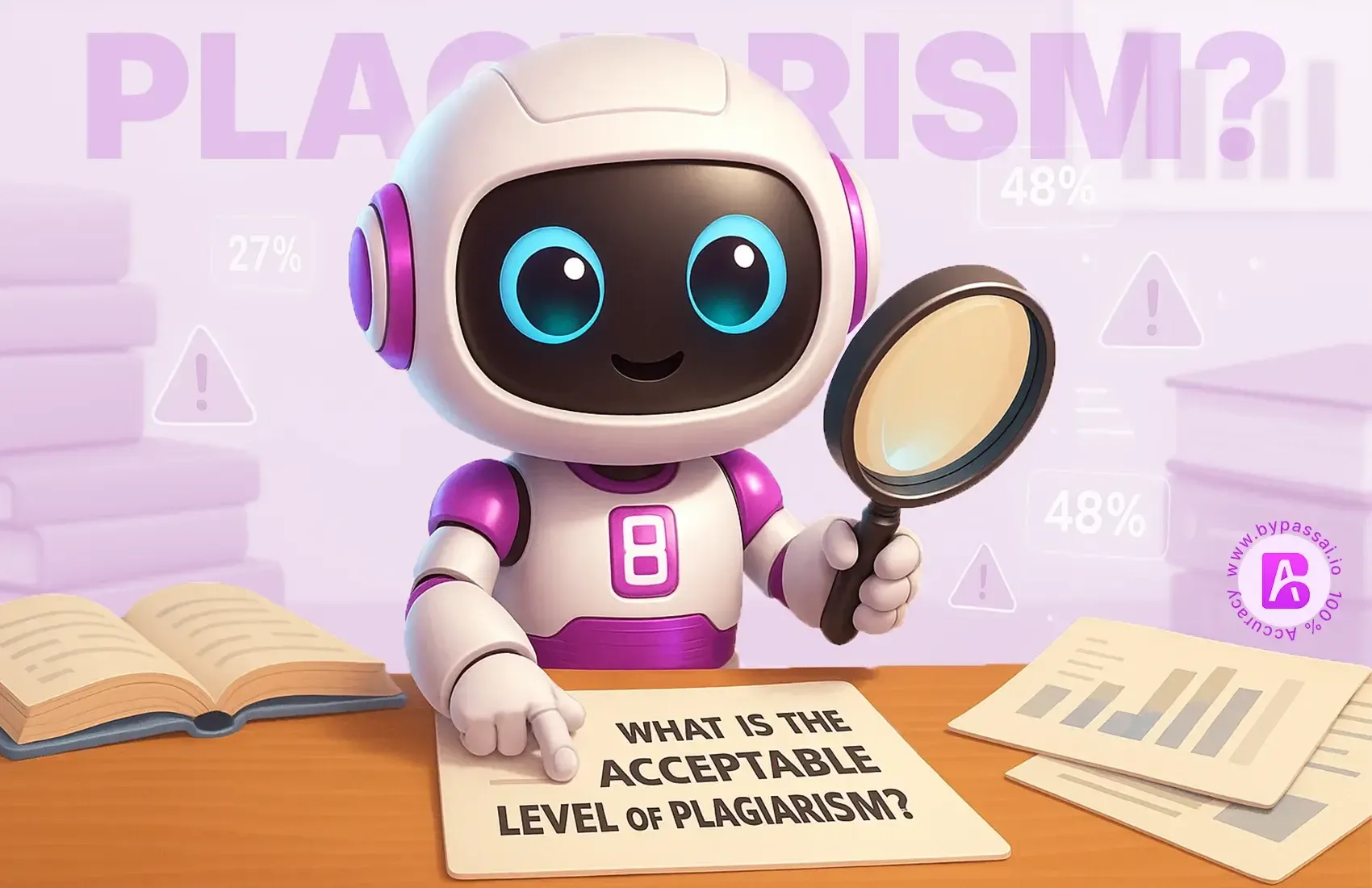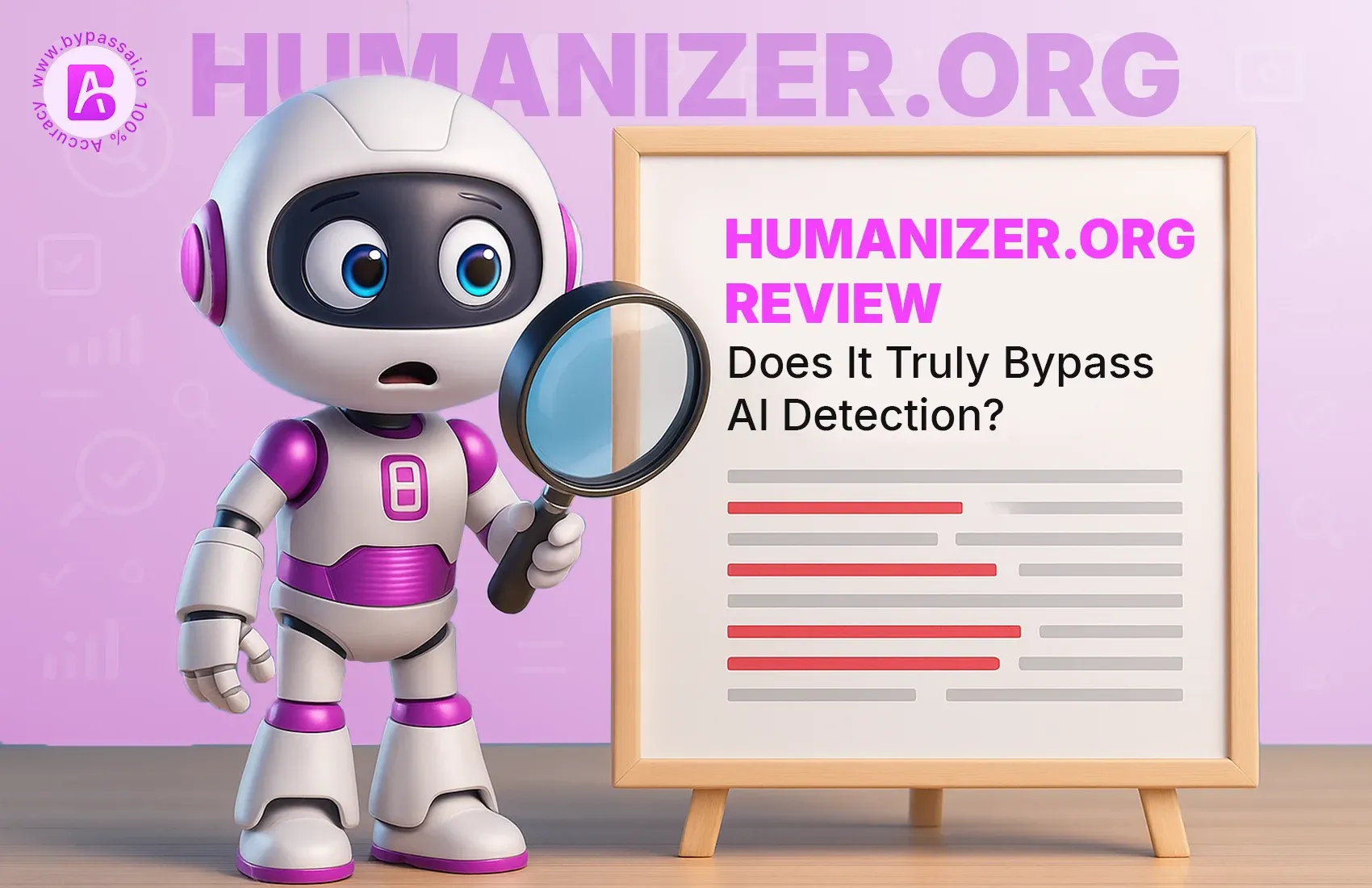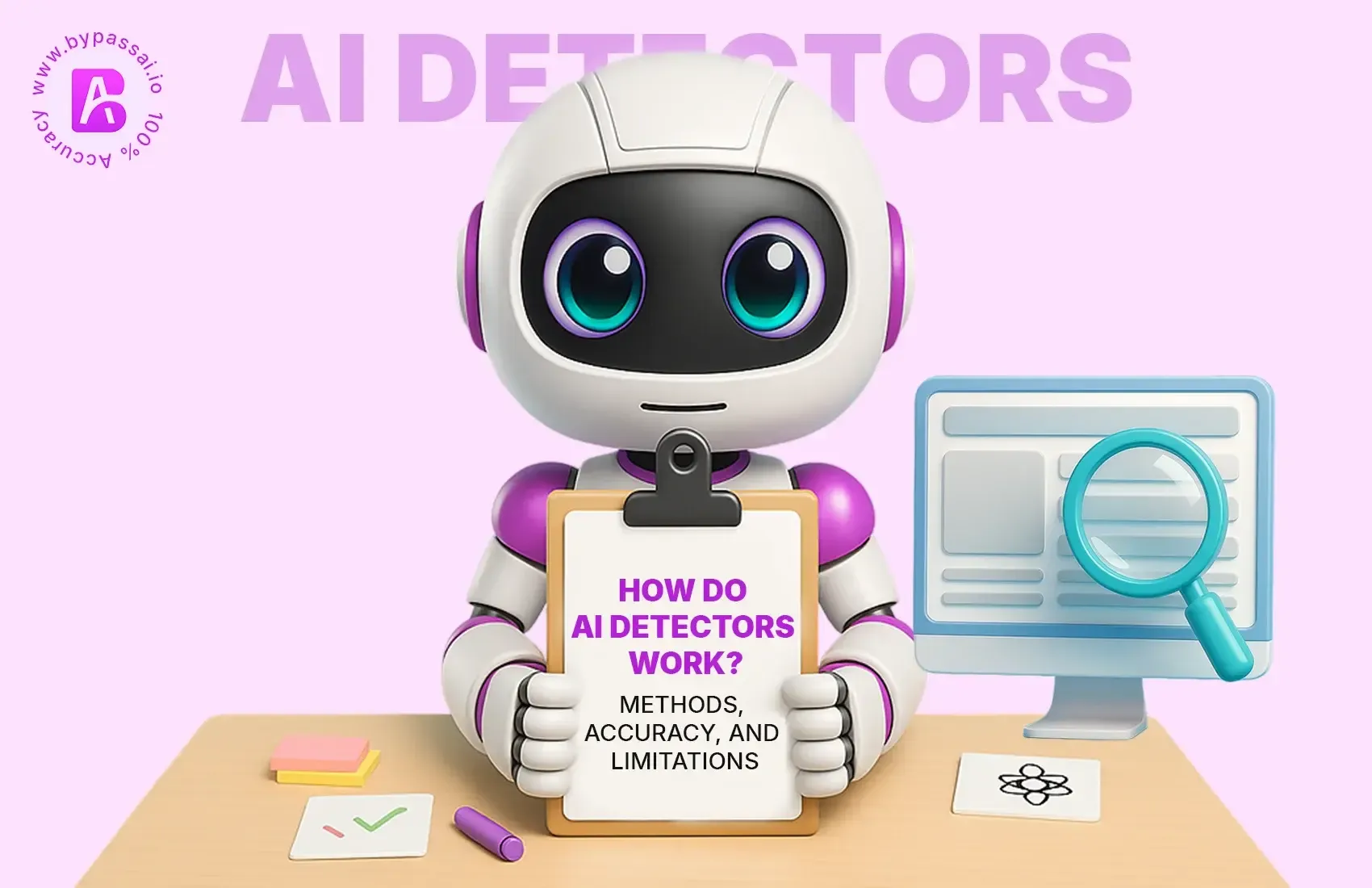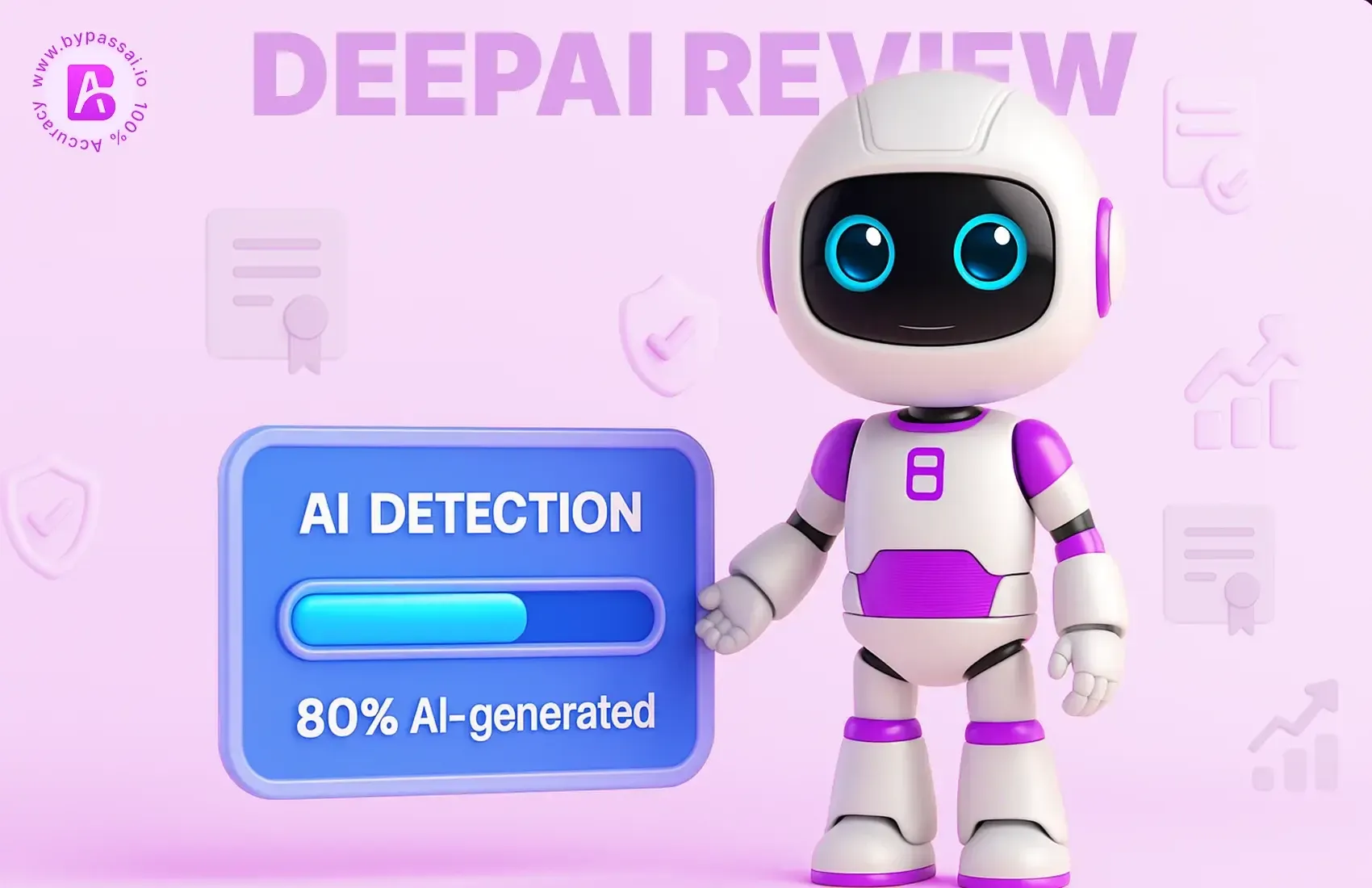Sign In
Welcome to Bypass AI! Sign in to continue your exploration of our platform with all its exciting features.
Forgot Password?
Don’t have an account ? Sign up
Sign Up
Embrace the Future with Bypass AI! Sign up now and let's rewrite the possibilities together.
You have an account ? Sign In
Enter OTP
We’ll send you an OTP on your registered email address
Back to Login
Forgot Password
We'll Send You An Email To Reset Your Password.
Back to Login
Enter OTP
We'll send you an email to reset your password.
Back to Login
Confirm Password
Please enter your new password.
TABLE OF CONTENTS
Quick Summary
What Is Plagiarism?
Types of Plagiarism
How Much Plagiarism Is Allowed?
A Guide to Avoiding Plagiarism
Is AI Considered Plagiarism?
Conclusion
FAQs
I've been hearing the term "plagiarism" since I started my content writing career, and it's a crucial parameter in writing that needs to be checked in professional writing. Many beginners still think that plagiarism tools began when AI writing tools came into existence. However, this isn't the case. Plagiarism checker tools have been available online since content writing became popular.
Nowadays, whether you are a student, researcher, or content writer, it is very important to check your important content once with plagiarism tools before final submission, so that if there is any plagiarism issue, you can fix it.
But as the amount of AI content on the web is increasing, the overall accuracy of AI plagiarism checkers is also decreasing. Therefore, many writers ask me what percentage of plagiarism content is acceptable in writing. Well, this depends on many factors, but today we will discuss the factors of plagiarism.
Quick Summary
By 2025-2026, 74% of new web pages will contain AI. This has weakened the accuracy of plagiarism checkers, as billions of new web pages have appeared on the internet in the last two years. Recognizing this problem, many academic institutions and publishing firms have established a "plagiarism content acceptance rate" to allow content with minor issues to be approved.
Even those minor issues can be attributed to many false reasons, such as the tool's lack of accuracy or the fact that similar content is already available on the internet.
Our focus in this article:
- What is plagiarism, and how does it appear in content?
- What are the types of plagiarism?
- How can we detect plagiarism?
- How can we fix plagiarism issues?
What Is Plagiarism?
If we understand the meaning of plagiarism in the digital textual content sector, then it can be considered a type of content that has been created by copying already available content.
For example, if the result shows that 25% of your content is plagiarism detected, then it means that 25% of your content matches similar lines of data from a web page already available on the internet. Although this plagiarism accuracy depends to a large extent on the tool, according to industry standards, if any content is plagiarized, then its source should be found, and manual checks should be done.
If we understand plagiarism in simple terms, it can be described as direct copying and pasting, without adding value and without the original owner's permission.
Plagiarism as Academic Dishonesty
Plagiarism is not only copying and pasting from someone else's content, but it is also a violation of trust. And in the academic sector, it is considered fraud because you are presenting someone else's intellectual work as your own. Many top universities consider this malpractice and take strict action against such content.
Therefore, never use anyone's content directly, and if you do use data representing your own, be sure to provide proper citation and disclosure.
Plagiarism in the Digital Age
The Internet and AI have evolved so much that you'll find plagiarism involved in almost all digital products, whether it's blogs, eBooks, or product descriptions. This isn't just considered copy-pasting in the content sector, but it's also seen as idea and work theft. Apart from this, if you use paraphrasing, and even AI-generated content, then you should be cautious, because AI also generates new content by using available content.
So you can face the issue of plagiarism even in AI-generated content. And many times, plagiarism tools also give false positive results, due to which it becomes trickier for writers and creators to remain original.
Types of Plagiarism
The plagiarism of textual content comes in many forms. Plagiarism is judged according to the nature of the content.
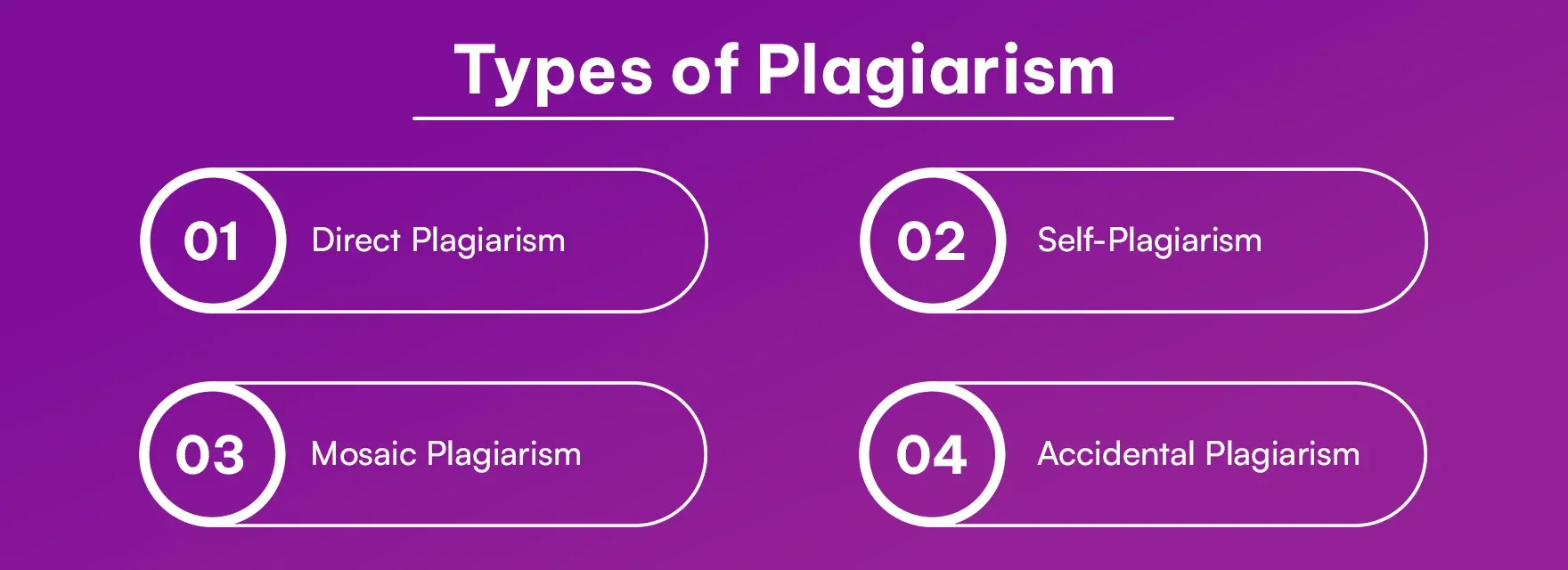
1. Direct Plagiarism
This is the most obvious type of plagiarism, in which the writer uses sentences or entire paragraphs word-for-word without attribution. This is essentially a copy-paste operation. In academic terms, it's equivalent to stealing someone's car.
Magazine plagiarism is intentional, done by writers or students to save time and effort. Magazine plagiarism is considered the most unethical in the writing industry.
2. Self-Plagiarism
This occurs when we reuse or borrow previous content without citing it. This may sound harmless, but in research and academia, it is considered unethical because such content is always expected to be new.
If you use content from your own website in a blog or free article, with proper citation, there's no issue with that, even if your own site's source is shown in the plagiarism check.
3. Mosaic Plagiarism
Intentional plagiarism is also known as "patchwork plagiarism," and it basically occurs when we try to mix copied content with our own words. In other words, if you try to rewrite someone else's content, you may also encounter mosaic plagiarism. It may look quite original, but if you use it without giving credit, it still counts as plagiarism.
4. Accidental Plagiarism
Many times, plagiarism occurs when content is not used intentionally. Perhaps the writer forgets to include quotation marks or citations, or perhaps paraphrases too closely.
And there are many new writers also who have to face the issue of plagiarism because they do not know about the writing guidelines, but unfortunately, the intent in writing does not matter that much; if there is plagiarism in your content, then you may have to face the issue of ranking drop or penalties.
How Much Plagiarism Is Allowed?
As we've learned, false positives can often occur due to the inaccuracies of plagiarism tools, and therefore, the academic and publishing sectors have set limits on the amount of plagiarism allowed. Let's explore the plagiarism limits for different sectors.
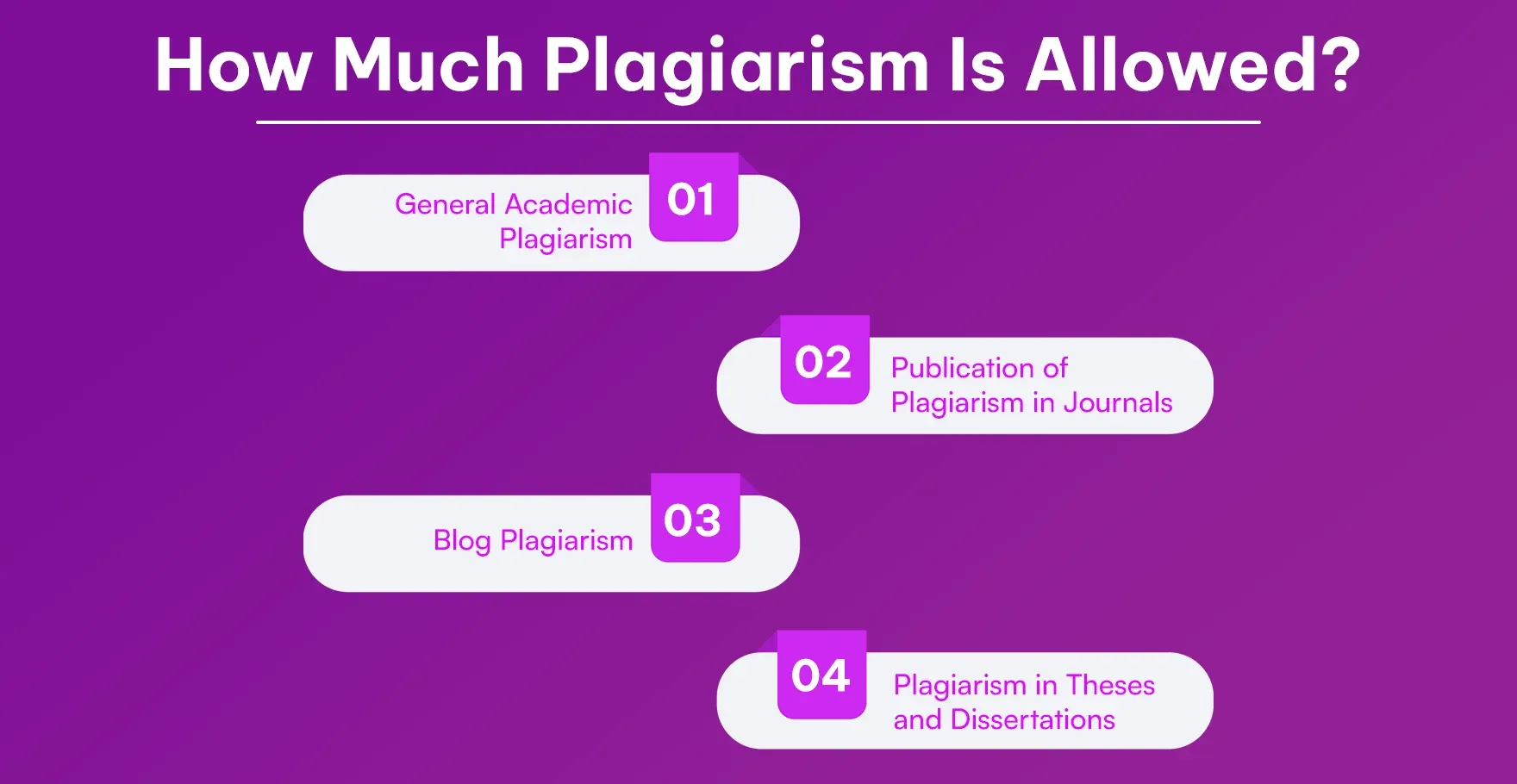
1. General Academic Plagiarism
Most universities allow up to 15% plagiarism, and this is considered accidental overlap. Plagiarism of more than 20% is classified as suspected of deliberate fraud and is then checked in various plagiarism tools, as well as manual checks, to determine the actual results.
2. Publication of Plagiarism in Journals
The rules are much stricter in the publishing sector, with only a 0-5% acceptance rate for journals, as even minor errors in the publishing sector fall under the categories of copyright issues and retractions.
For this reason, large publishing sectors follow a proper content monitoring process to ensure only 100% perfect content is published.
3. Blog Plagiarism
31.6% of internet websites are blogging sites, a significant job sector. Professional bloggers and SEO experts do not tolerate plagiarism exceeding 30%, especially if the issue arises from overlapping common phrases, quotes, and definitions.
SEO experts use numerous external plugins or tools to prevent plagiarism.
4. Plagiarism in Theses and Dissertations
For higher-level scientific or research work, the rules are much stricter, and less than 5% plagiarism is acceptable. For this reason, most of the research papers are manually checked on different parameters before publishing.
A Guide to Avoiding Plagiarism
Let's learn how to avoid plagiarism in your content. I follow some basic steps that you can follow too.
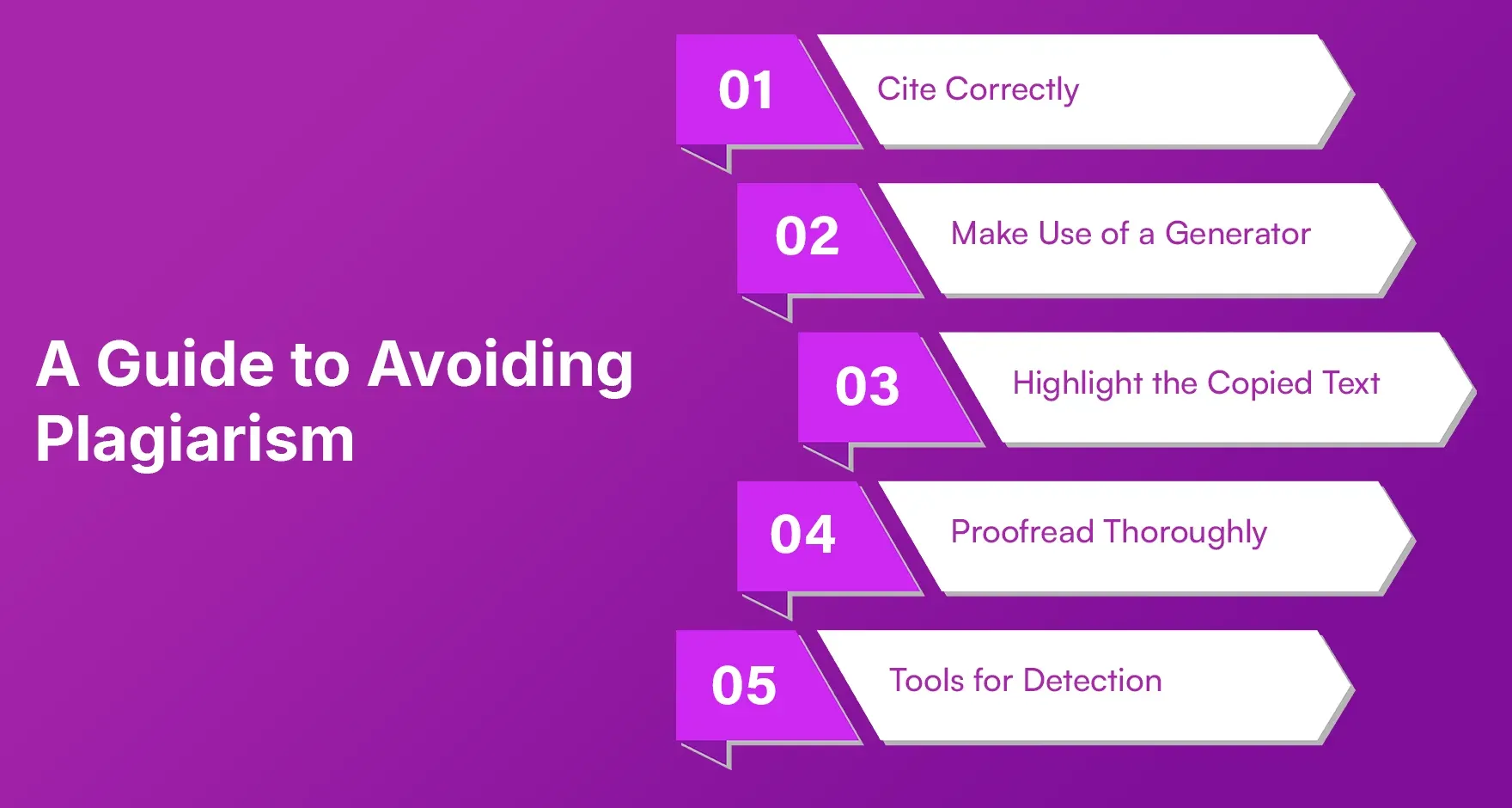
1. Cite Correctly
Whenever you borrow content ideas from another web page, always give them proper credit. And whether you choose APA, MLA, or Harvard style, try to keep your style consistent. By using simple citations in your writing, you can go a long way toward avoiding plagiarism.
2. Make Use of a Generator
For citations, you can use citation tools like Zotero and Mendeley, or even citation generators to make referencing stress-free. However, remember that these are often not perfect, so try to perform manual checks.
3. Highlight the Copied Text
Whenever you're writing content, highlight any portion of your content that you use from a source or website, so that when your content is finalized, you'll know which portion of your content was used.
This will ensure that when plagiarism is found in that part of your content, you will have an explanation available as to why it was plagiarized.
4. Proofread Thoroughly
Proofreading isn't just about grammar; its main goal is to acknowledge all borrowed ideas, and you can use citations or disclosures to do this.
5. Tools for Detection
The most important thing for content detection is to check it with the right tools. I use platforms like Bypass AI, Grammarly, Originality.AI, and Copyscape for plagiarism detection. For better accuracy, try to check your content on two or three platforms.
My Extra Tip: Whenever you're writing content, give proper citations for any ideas you use and disclose your process at the end of your content. In addition to plagiarism detection, you should also use the BypassAI detector to ensure your content remains completely perfect.
Is AI Considered Plagiarism?
New writers often ask me whether using AI tools or writing tools constitutes plagiarism, and whether AI content should also be considered plagiarism.
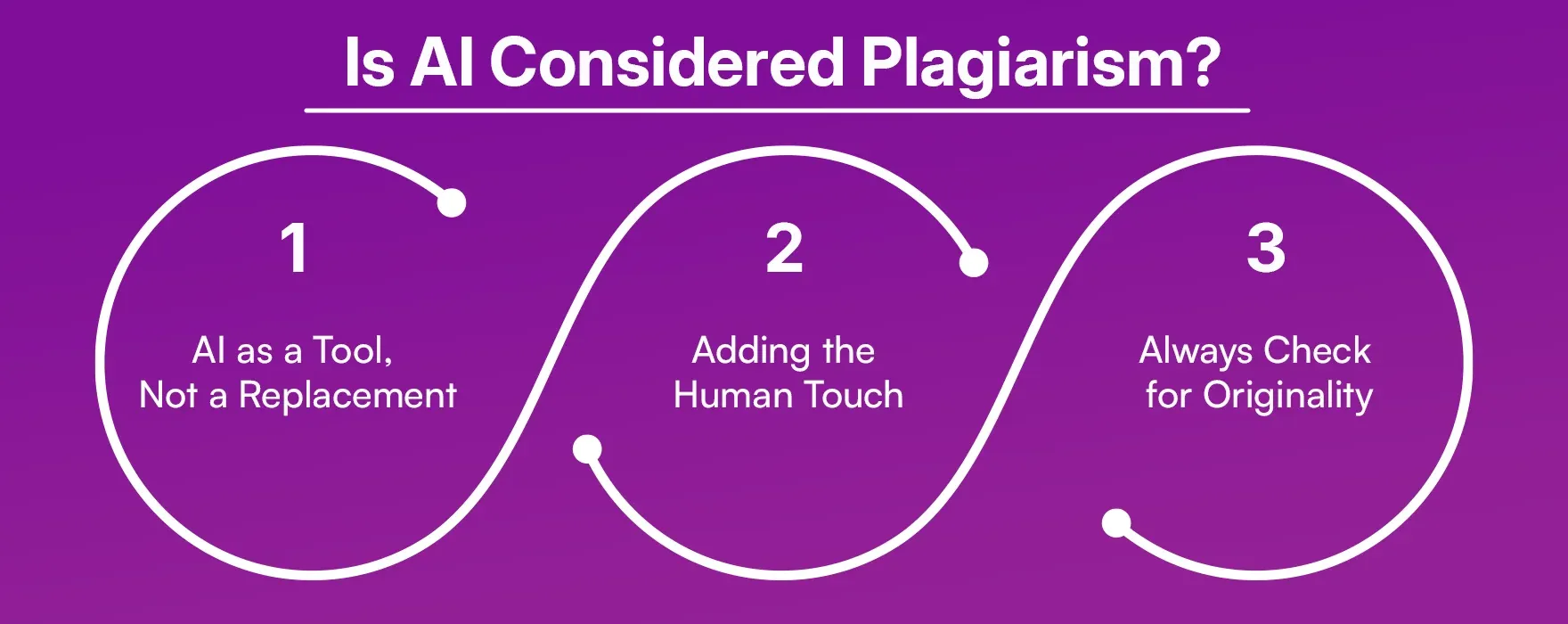
1. AI as a Tool, Not a Replacement
Content created through AI writing tools doesn't often directly pose a plagiarism issue, but as we know, AI doesn't have any experience or skills of its own, so when AI tools generate content, they gain ideas and knowledge from existing content.
This often leads to issues of plagiarism in such content, and there's a high chance of AI detection in such content.
2. Adding the Human Touch
Always use AI for research or helper purposes. You can also use AI chatbots for ideas or outlining. However, whatever content you write, always use your own style, examples, and insights to avoid any issues of plagiarism or AI detection.
3. Always Check for Originality
Original content doesn't necessarily mean your content will pass plagiarism checks. Original content means content that is genuine and provides quality value to the audience. That's why readers, professors, and journals only want to read original content, not a remix of existing ideas.
And one more thing to keep in mind is that before final content submission, check your content with plagiarism or AI detection tools to ensure you meet all the parameters.
Conclusion
As we already know, the main goal of content is to share new and unique ideas with people. Therefore, it is crucial that the content published or submitted is 100% original. However, due to the abundance of content on similar topics on the web, many institutions have set acceptable plagiarism limits, such as 0% plagiarism for journals, 15% for some universities, and 30% for blogs.
To maintain content originality and ranking, strive to have 0% plagiarism in your content. You can add proper citations and examples, and try to perform manual proofreading before final submission. Keep in mind that AI can only assist, not replace, your own ideas.
FAQs
1. Is 10% plagiarism acceptable?
Yes, many universities consider 10–15% plagiarism acceptable, as common phrases or accidental overlaps can often lead to plagiarism issues.
2. Can I use AI tools like ChatGPT without plagiarizing?
Yes, you can, but it's important to include your own experience and opinions. ChatGPT's raw content is highly susceptible to plagiarism, as it creates content using data available online.
3. How much plagiarism is allowed in a thesis?
Most professionals accept less than 5% plagiarism in a thesis. Theses are very important content, so the guidelines are strict.
4. Do blogs allow higher plagiarism levels?
Many publishing firms consider up to 30% plagiarism acceptable, but the less plagiarism, the greater the chance of higher credibility or ranking.
5. What happens if I accidentally plagiarize?
Consequences vary greatly, as they can result in lower marks or academic penalties. So, check for plagiarism before submitting.
6. Which plagiarism tool is best?
For plagiarism detection, you may prefer Bypass AI, Grammarly or Quillbot, as these are popular and reputable copywriting platforms.
7. Does paraphrasing count as plagiarism?
If it is done without proper citation or if you have not included your own ideas and thoughts in it, then it can be counted as plagiarism.

